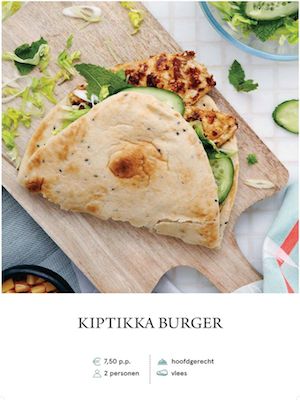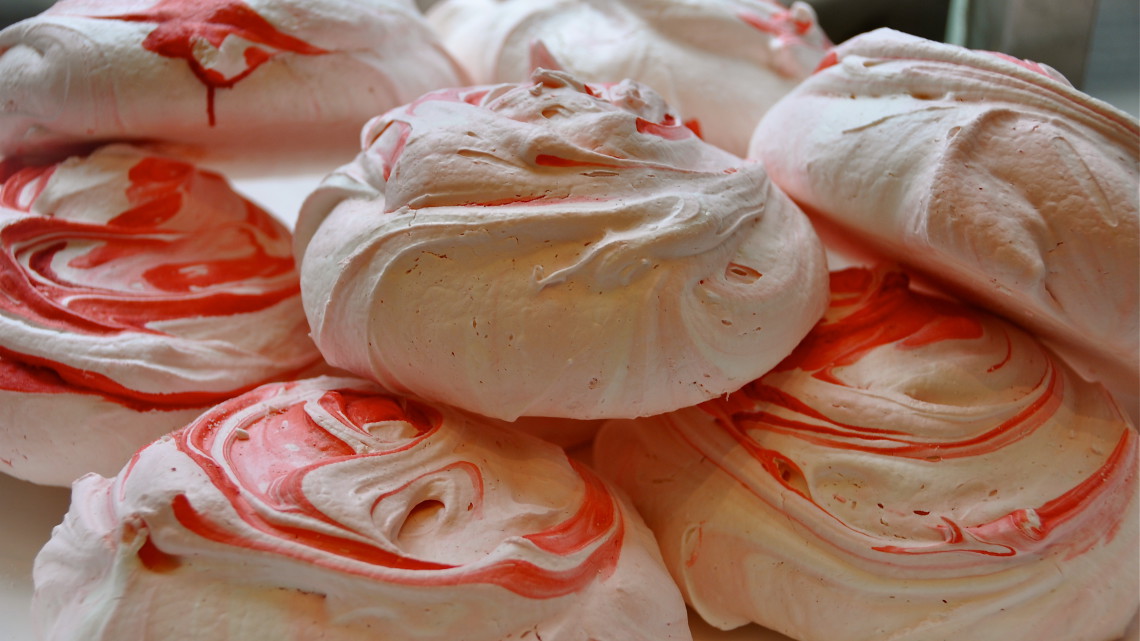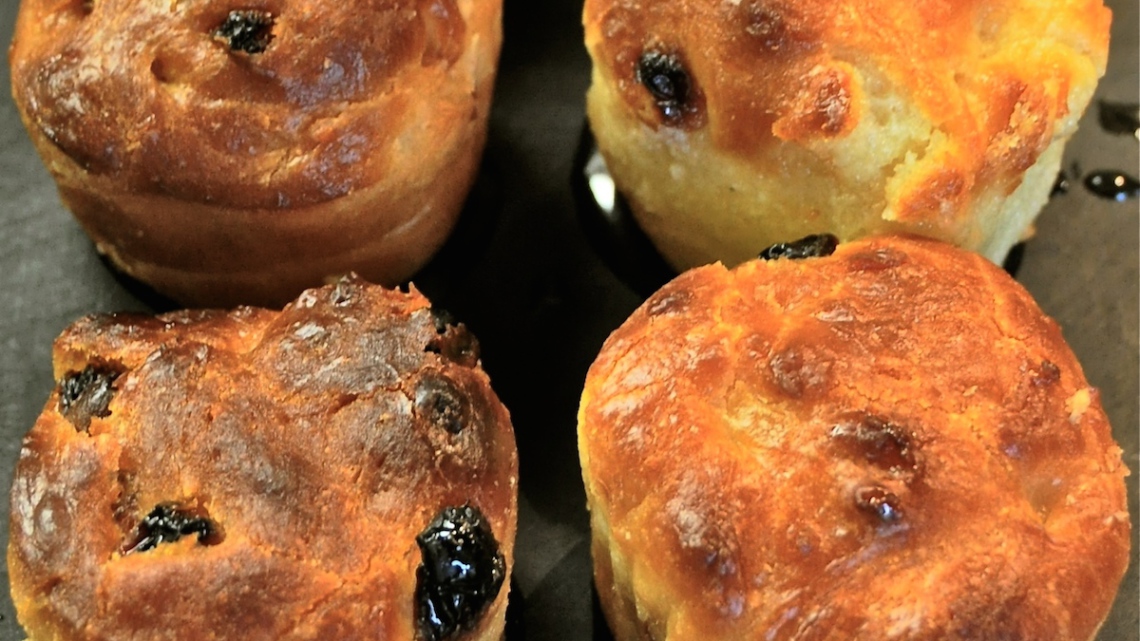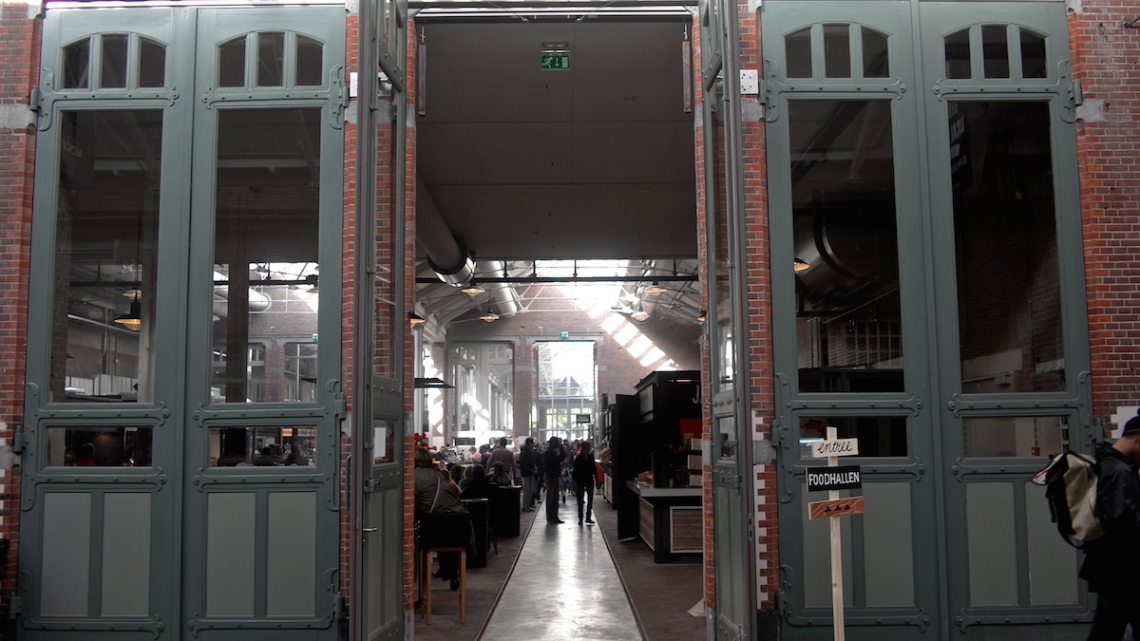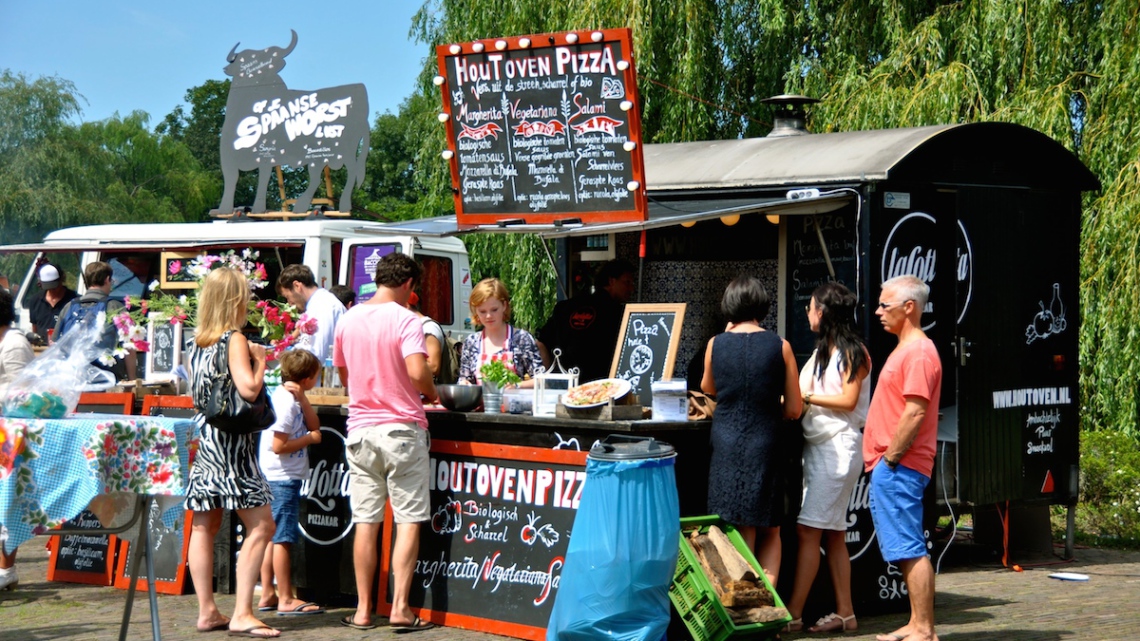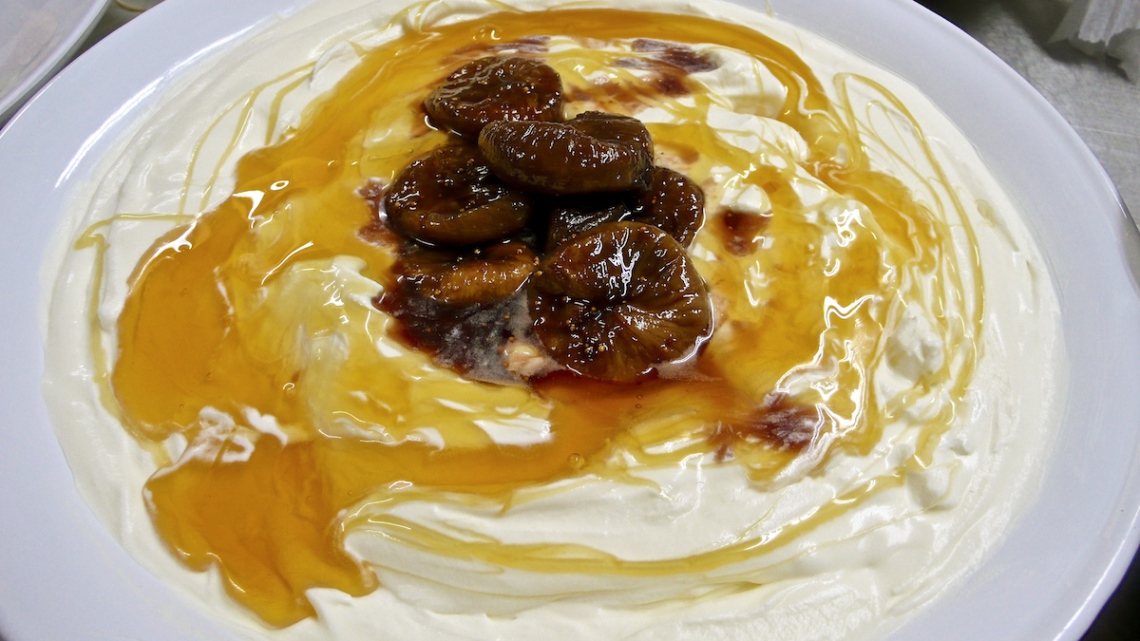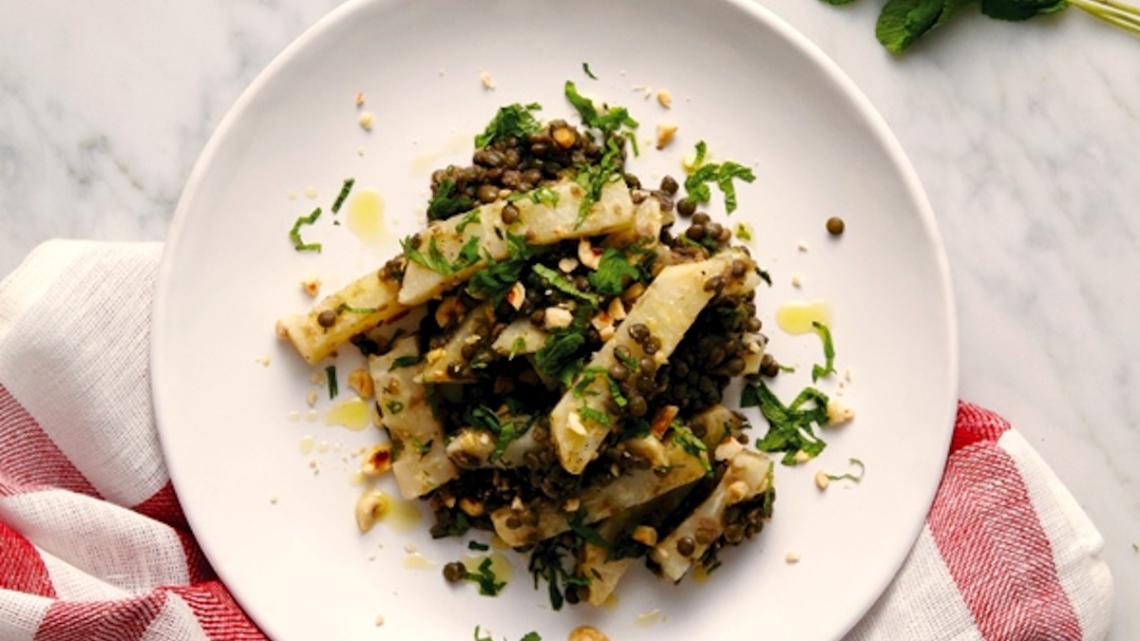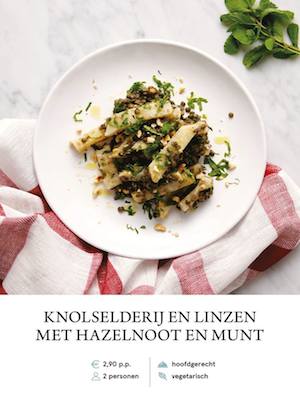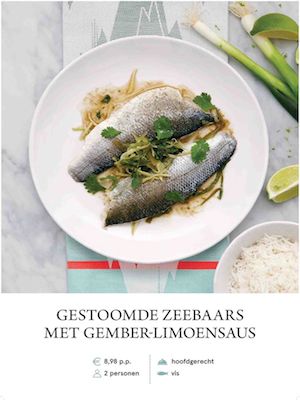Bilder & de Clercq's New Recipes Week 44
As you may know by now, we are the chefs behind Amsterdam hotspot, Bilder & de Clercq. Every week we develop 3 new recipes for the stores and we'll be keeping you updated with the week's newest recipes. This weeks new recipes are:
Meringues
Ingredients
200 g egg white, at room temperature
400 g caster sugar
a little lemon juice
Method
Start by weighing your egg whites. Weighing your egg whites gives you more accuracy to achieve the half egg white ratio and will ensure that your meringues are perfect every time.
Preheat the oven to fan 110° C and line 2 or 3 oven trays with baking paper. Rub the bowl of a heavy-duty mix with half a lemon. The lemon juice ensures that the bowl is fat free and the little touch of acid helps the egg whites beat up better.
With the whisk attachment fitted, start the machine on low speed. This helps to break the 'bonds' in the egg white so that it will beat up to a larger volume. Once the egg white turns foamy, increase the speed to high and beat until it turns white and starts to the thicken.
Now it's time to start adding the sugar, about a large tablespoon at a time. Keep the machine running and take care that it has beaten in well after each addition. Once all the sugar has been added, you should have a thick, glossy meringue. Spoon or pipe mounds on to the oven trays. You can leave them plain, or top them with a dusting of cocoa powder, chopped nuts or a bit of food coloring, for an interesting effect.
Place the meringues in the oven and bake. After 30 minutes, reduce the temperature to 100° C and allow to bake for a further 2 hours. After that time, turn off the oven and allow the meringues to cool oven. Serve, stacked up with whipped cream and seasonal fruit.
Meringues keep well for weeks if stored properly in an airtight container.
You can also play around with the flavours of the meringues. Try adding a touch of instant espresso powder for coffee meringues, or some rose water or orange blossom water for an exotic twist.
We, the Amsterdam Flavours chefs, hope you enjoy this recipe as much as we do. If you have any questions on how to prepare it or just want to send us your feedback, you can reach us here Contact Amsterdam Flavours
Marie-Stella-Maris Archives
In 2010 the United Nations declared access to clean drinking water and sanitation to be a basic human right (Resolution 64/292).
Resolution 64/292 inspired the creation of MARIE-STELLA-MARIS in 2011. MARIE-STELLA-MARIS strongly believes in the idea of taking care of one another and spreading creativity, personality and style to realize our social objectives.
Through sharing our personal interests and by offering a broad range of water and care products they aim to change the life of others. For each product purchased, MARIE-STELLA-MARIS donates a fixed amount towards clean drinking water projects worldwide.
The MARIE-STELLA-MARIS Archives store in Amsterdam is a must visit.
For more information please visit MARIE-STELLA-MARIS
Babas au Rhum
Makes about 16
Ingredients
100g raisins
1¼ cups rum
100g butter, softened to room temperature
25g fresh yeast or 10g dried yeast
250g flour, sifted
25g sugar
generous pinch of salt
4 eggs
50g melted butter, for greasing
Syrup
1 liter water
500g sugar
Method
Soak the raisins in the rum.
Mix the yeast with 2 tablespoons warm water. Put the flour in a large bowl and make a well in the centre. Add the sugar and salt, 2 eggs and the yeast mixture. Mix with a wooden spoon until the dough is elastic, then add the other egg. Work this in and then add the final egg and work it in. Finally add the softened butter and the drained raisins.
Brush 16 dariole moulds with the melted butter. Divide the dough into 16 small pieces and put a piece into each mould. Leave in a warm place until the dough has risen to fill the moulds. Preheat the oven to 200°C and then bake them for 15-20 minutes. Turn the babas out immediately onto a rack and allow to cool completely.
Prepare the syrup by boiling together the water and sugar. Add the remaining rum. Dip each baba into the boiling syrup and leave submerged until no more air bubbles are released. Drain and place on a cake rack resting over a dish. As the rum syrup collects in this dish, repeatedly spoon it over the babas to keep them very moist.
We, the Amsterdam Flavours chefs, hope you enjoy this recipe as much as we do. If you have any questions on how to prepare it or just want to send us your feedback, you can reach us here Contact Amsterdam Flavours
Bobotie
This traditional South African Cape Malay recipe is a must to try!
Serves 6-8
Ingredients
2 thick slices of stale white bread
250 ml water
5 Tablespoons sunflower oil
4 Tablespoons butter
2 large onions, finley chopped
800g lamb or beef mince
3 cloves garlic, finley chopped
1 Tablespoon Garam Masala
1 teaspoon turmeric
2 teaspoons ground cumin
2 teaspoons ground coriander
3 cloves
5 allspice berries
125 ml sultanas or golden raisins
2 Tablespoons fruit chutney or apricot jam
salt and freshly ground black pepper to taste
6-8 lemon or bay leaves
250ml natural yoghurt or buttermilk
2 eggs, beaten
Method
Soak the bread in the water. Heat a large heavy-based pot with 3 tablespoons sunflower oil and fry the lamb or beef mince until browned. Transfer to a bowl.
Fry the onions in 2 tablespoons sunflower oil and the butter until just transparent. Add the garlic and fry for a further minute. Add the spices and fry about 1 minute to remove their rawness and cook them out slightly. Add the meat, sultanas, chutney or jam to the pan and mix well together, ensuring that all ingredients are coated in the spices. Season with salt and pepper.
Preheat the oven to 180 C. Squeeze out the water from bread and add to meat and mixing well. Grease and ovenproof dish and add the meat mixture, spreading out into an even layer.Roll lemon leaves into spikes and insert into the mixture or if you can only get bay leaves stick them in so that they are pointing out. Cover with aluminium foil and bake for 15 minutes.
Lightly beat the eggs and yoghurt or buttermilk together, season with salt and pepper and pour over meat. Bake, uncovered, until egg mixture has set, about 20 minutes. You may need to increase the temperature to 200 C to ensure the custard colours to a golden brown. Serve with yellow rice (basmati rice with turmeric added to the water) and fruit chutney.
* We recommend Mrs Balls Chutney. A classic South African ingredient which is becoming more readily available in Holland. If you can't find it, use any another brand of chutney you like.
Wine Tip: Pepin Conde Cabernet Sauvignon
We, the Amsterdam Flavours chefs, hope you enjoy this recipe as much as we do. If you have any questions on how to prepare it or just want to send us your feedback, you can reach us here Contact Amsterdam Flavours
Pepin Condé Cabernet Sauvignon - Red Wine
Origin:
Stark-Condé Wines is a family business that produces high-quality artisan wines in Stellenbosch, South Africa. American born and raised José Condé earned his stripes working in the art and design world for 15 years. In 1997, he moved with his wife and two daughters to South Africa, where, together with his father-in-law Hans Schroder (owner of Neil Elis Wines), founded in Stark-Condé Wines in 1998. The name of the company is a combination of the surnames of co-owner and winemaker José Condé and of his wife. Pepin Condé is a trademark of Stark-Condé. The name is derived from the local wine maker's childhood pet name: (José) Pepin Condé...
The brand stands for high-quality wines made from specific vineyards outside the usual wine region of the Stark-Condé wines. These specially selected vineyards all produce top quality grapes with their own character. For this wine, mainly cabernet sauvignon and merlot grapes from a well known vineyard on the Bottelary Hills in Stellenbosch are used, supplemented with grapes from Helderberg and Jonkershoek Valley. The average height of the vineyards is 250 m and the average age of the vines is around 15 years.
Production:
This wine is classicly vinified. The destalked and crushed grapes are fermented in stainless steel tanks and pumped 3 times daily so that the juices come into contact with oxygen. After the alcoholic fermentation, the grape must is compressed and transferred back into the stainless steel tanks where it undergoes the malolactic fermentation. Part of the wine fermentation takes place in oak barrels. The assembled wine is matured for 12 months partly in French and partly in American oak barrels. Before bottling, the wine is lightly filtered.
Taste impression:
Typical classic 'Stellenbosch' Cabernet wine, intensely aromatic, plenty of ripe dark fruit, powerful, fleshy and full, with prominent tannins and a very pleasant 'spicy touch'. Serve at: 15-17 ° C. Ageing potential: a few years after the harvest at best.
Culinary advice:
Ideal accompaniment to meat dishes with a powerful, rich flavour: beef, game, lamb, grilled meat, from the braai or barbecue, roasted in the oven or the rotissoire, or in stews... Also delicious with ripe, hard farmhouse cheeses.
Buy or taste this wine? For more information visit Wijnkoperij De Gouden Ton
Every two weeks we will be giving away a bottle of the featured wine. To stand a chance of enjoying a bottle, fill out the contact form including the name of the wine and we will let you know if you have been selected.
De Foodhallen
De Foodhallen, Amsterdam's brand new and first permanent indoor market, is open. With it's bustling and vibey atmosphere, this is definitely the place to be seen.
Housed in an old tram depot in Amsterdam West, the Hallen and Foodhallen have been stunningly renovated and preserved.
We visited on a Saturday morning and had the privilege of first visiting the Local Goods Market. We tasted and we talked. We love the passion and enthusiasm these small local producers have for their products and we discovered some really fantastic new things. We'll be giving the ones really liked more attention in coming columns.
De Foodhallen itself is a melting pot of deliciousness; a culinary journey round the world. There is something on offer for everyone - hotdogs, hamburgers, Vietnamese, Turkish, Spanish and of course, home-grown Dutch.
The idea is a simple one. Choose what you want to eat from one of the many Artisan kitchens, grab a drink and a table in the middle of the hall and enjoy. We didn't get a chance to taste everything, so we will be going back to try some more and write about them in more detail.
We do hope, however, that they add a permanent market like one sees in Southern Europe selling vegetables, meats. etc. That would really be the icing on the cake.
For more information please visit Foodhallen
Reizende Sterren
Street food is becoming ever more popular and more accessible. Reizende Sterren (Rising Stars) is a book documenting the growing number of mobile kitchens and food trucks in the Netherlands.
The chapters begin by telling the story behind each of the talented and passionate entrepreneurs; their reasons for choosing to do what they have.
Each featured kitchen has supllied a recipe for their signature dish, so you cooking some delicious street food at home.
Think, slow-cooked pork belly with cauliflower cream,puffed quinoa and mustard oil from Smokey Goodness or The Thriller Burger from the Thrill Grill.
This book is ideal for those who love fast food with a twist!
Publisher: Uitgeverij Komma
Author: Monica Abdoel
Price: 29,95 euro
Greek yoghurt with Dried Figs in Port
This is the one of the easiest and most delicious desserts around. You can rustle it up in no time at all. Serve it in a large bowl in the middle of the table for everyone to help themselves.
Ingredients
large tub Greek yoghurt
dried figs
port
honey
toasted walnuts, chopped (optional)
Method
If you have 10 minutes free, take a bunch of dried figs, remove the hard stalks and and place them in a jar. Cover them in port (you don't need to use the most expensive). You can add some spices to flavour if your wish, fennel seeds, star anise or cinnamon sticks. Close the lid and leave to stand. In fact the longer you keep them, the better they become.
Place the figs with the port in a saucepan, bring to a boil and allow to reduce gently until the figs have softened and the port has become syrupy and sticky and is coating the figs. Allow to cool.*
Pour the yoghurt into a serving bowl. Drizzle with honey, top with the sticky port figs and if you wish, scatter with chopped walnuts.
* The figs are perfect to use this way in salads or served with a beautiful blue cheese.
We, the Amsterdam Flavours chefs, hope you enjoy this recipe as much as we do. If you have any questions on how to prepare it or just want to send us your feedback, you can reach us here Contact Amsterdam Flavours
Bilder & de Clercq's New Recipes Week 43
As you may know by now, we are the chefs behind Amsterdam hotspot, Bilder & de Clercq. Every week we develop 3 new recipes for the stores and we'll be keeping you updated with the week's newest recipes. This weeks new recipes are:



